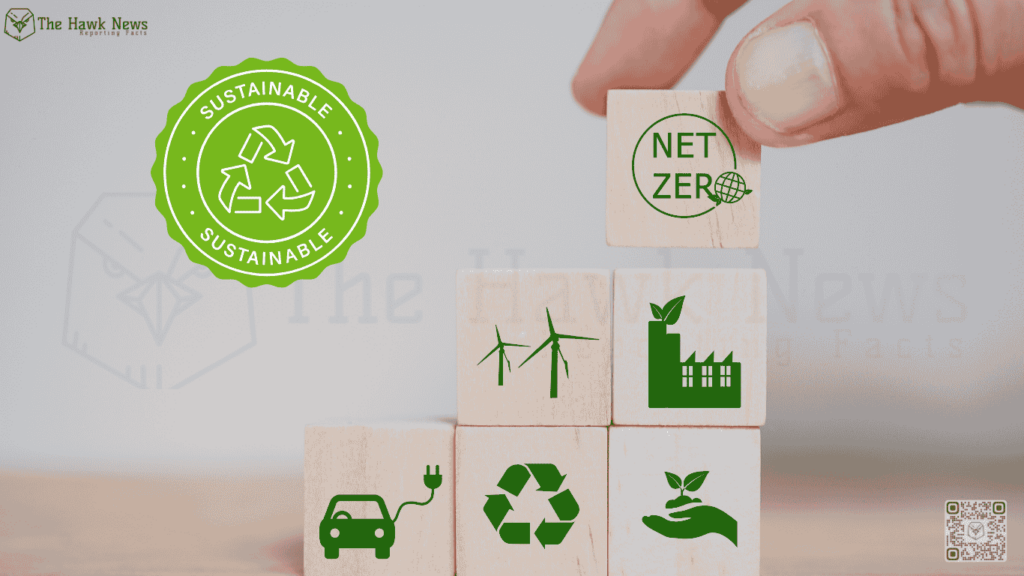
In recent years, sustainable living has evolved from a niche lifestyle to a mainstream movement, driven by a growing awareness of environmental challenges. From minimalism and zero-waste practices to the adoption of eco-friendly products, individuals worldwide are taking steps to reduce their ecological footprint. This article delves into the key trends shaping sustainable living, highlighting their impact on our daily lives and the planet.
Minimalism: Living with Less for a Greener Future
Minimalism is more than just a design aesthetic; it’s a way of life that prioritizes quality over quantity. By focusing on what truly matters, minimalists aim to:
- Reduce Waste: Owning fewer items translates to less consumption and a reduction in landfill contributions.
- Save Resources: Minimalism encourages the mindful use of water, energy, and raw materials, supporting conservation efforts.
- Declutter Minds: A simpler, clutter-free environment fosters mental clarity and reduces stress.
Minimalism not only benefits individuals but also challenges the culture of consumerism that drives unsustainable practices. The mantra “less is more” underscores the importance of intentional living for both personal well-being and environmental sustainability.
Zero-Waste Practices: Striving for a Circular Economy
The zero-waste movement advocates for a lifestyle where waste is minimized, and resources are reused. Key principles include:
- Refusing Unnecessary Items: Saying no to single-use plastics and excess packaging.
- Reducing Consumption: Prioritizing durability over disposability to extend the lifespan of products.
- Reusing and Repurposing: Finding creative ways to give old items new life.
- Recycling: Proper sorting and recycling of materials to ensure they re-enter the production cycle.
Cities like San Francisco have adopted ambitious zero-waste goals, inspiring individuals and communities to rethink their waste habits. By embracing these practices, households can contribute to the creation of a circular economy, where resources are continuously reused rather than discarded.
Eco-Friendly Products: The Rise of Conscious Consumerism
Eco-friendly products are at the forefront of sustainable living. These items are designed to minimize environmental impact throughout their lifecycle. Popular categories include:
- Reusable Alternatives: Items like metal straws, cloth shopping bags, and bamboo utensils replace disposable counterparts.
- Sustainable Fashion: Brands are adopting organic fabrics, ethical labor practices, and circular fashion principles.
- Green Cleaning Products: Biodegradable and non-toxic cleaning supplies reduce harm to ecosystems.
- Renewable Energy Gadgets: Solar-powered chargers and energy-efficient appliances help reduce carbon emissions.
Consumers are increasingly scrutinizing the environmental credentials of the products they buy. Certifications like Fair Trade, USDA Organic, and Energy Star offer assurances of sustainability and ethical practices.
Mindful Consumption: Buying with Purpose
Mindful consumption emphasizes quality, longevity, and necessity over impulsive buying. Practical steps include:
- Shopping Locally: Supporting local businesses reduces transportation emissions and strengthens community economies.
- Opting for Secondhand: Thrift shopping and upcycling prevent items from ending up in landfills.
- Researching Brands: Consumers are demanding transparency about sourcing, production, and sustainability efforts.
This trend reflects a shift towards intentional living, where purchases align with values and long-term goals rather than fleeting desires.
Sustainable Food Choices: Eating for the Planet
Food production is a major contributor to greenhouse gas emissions, deforestation, and water usage. Sustainable eating habits include:
- Plant-Based Diets: Reducing meat and dairy consumption lowers carbon footprints and conserves resources.
- Seasonal and Local Foods: Eating in-season and locally-sourced produce supports sustainable agriculture.
- Minimizing Food Waste: Meal planning, composting, and creative cooking with leftovers can significantly reduce waste.
Farmers’ markets, community-supported agriculture (CSA), and plant-based meal kits are gaining popularity as people seek to align their diets with environmental values.
Renewable Energy Integration: Powering Homes Sustainably
The transition to renewable energy is a cornerstone of sustainable living. Homeowners are increasingly adopting:
- Solar Panels: Generating clean energy from the sun reduces dependence on fossil fuels.
- Energy-Efficient Appliances: Smart thermostats, LED lighting, and energy-saving devices optimize electricity usage.
- Home Insulation: Proper insulation reduces heating and cooling needs, conserving energy.
Government incentives and technological advancements have made renewable energy solutions more accessible, empowering individuals to reduce their carbon emissions while saving on energy bills.
Community Initiatives: Collective Efforts for Sustainability
Sustainable living thrives when communities come together. Examples of collective efforts include:
- Urban Gardens: Transforming vacant lots into green spaces provides fresh produce and improves air quality.
- Shared Resources: Tool libraries, carpooling programs, and community centers encourage resource sharing.
- Educational Workshops: Local events promote awareness and teach practical sustainability skills.
Communities that prioritize sustainability create a ripple effect, inspiring others to adopt greener practices and advocate for systemic change.
Technology and Innovation: Paving the Way for a Greener Future
Emerging technologies play a crucial role in advancing sustainable living. Innovations include:
- Smart Homes: IoT devices monitor and optimize energy and water use.
- Green Building Materials: Sustainable materials like recycled steel, bamboo, and hempcrete reduce construction’s ecological impact.
- Carbon Capture: Technologies that remove CO2 from the atmosphere combat climate change.
These advancements demonstrate how cutting-edge solutions can enhance sustainability without compromising comfort or convenience.
Barriers to Sustainable Living
Despite its benefits, sustainable living faces challenges such as:
- Cost Barriers: Eco-friendly products and renewable energy systems often have higher upfront costs.
- Lack of Awareness: Many people are unaware of sustainable alternatives or how to implement them.
- Systemic Obstacles: Policies and infrastructure may not always support sustainable choices.
Addressing these issues requires collaborative efforts from governments, businesses, and individuals to create accessible and affordable sustainable solutions.
Conclusion
Sustainable living is no longer a trend—it is a necessity. By adopting practices like minimalism, zero-waste living, and mindful consumption, individuals can significantly reduce their environmental impact. The rise of eco-friendly products, renewable energy, and technological innovations further supports this lifestyle shift.
While challenges remain, the collective efforts of individuals, communities, and industries are paving the way for a greener, more sustainable future. Embracing these trends today ensures a healthier planet for generations to come.